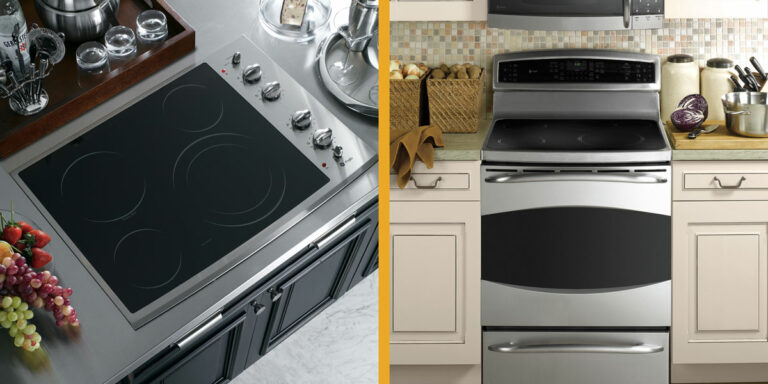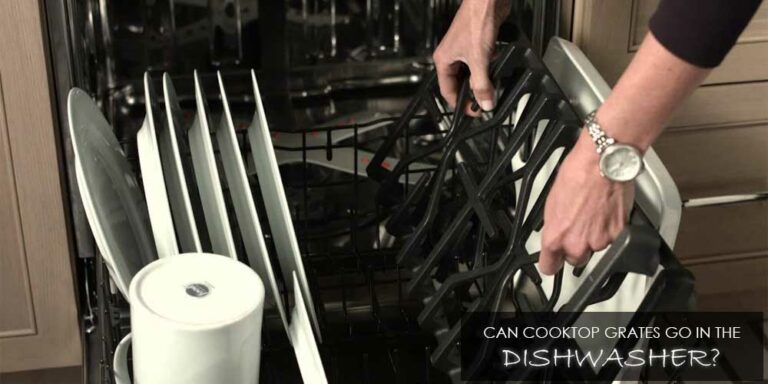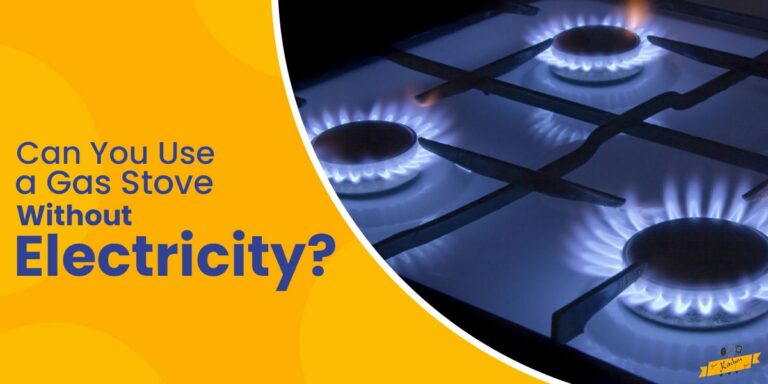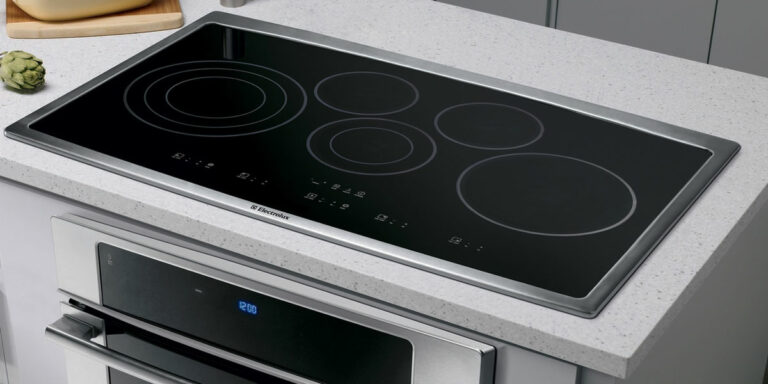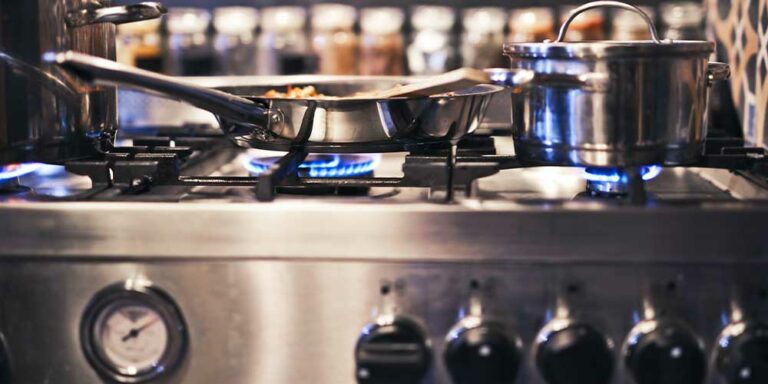How to Fix Orange & Yellow Flames on Gas Stove?
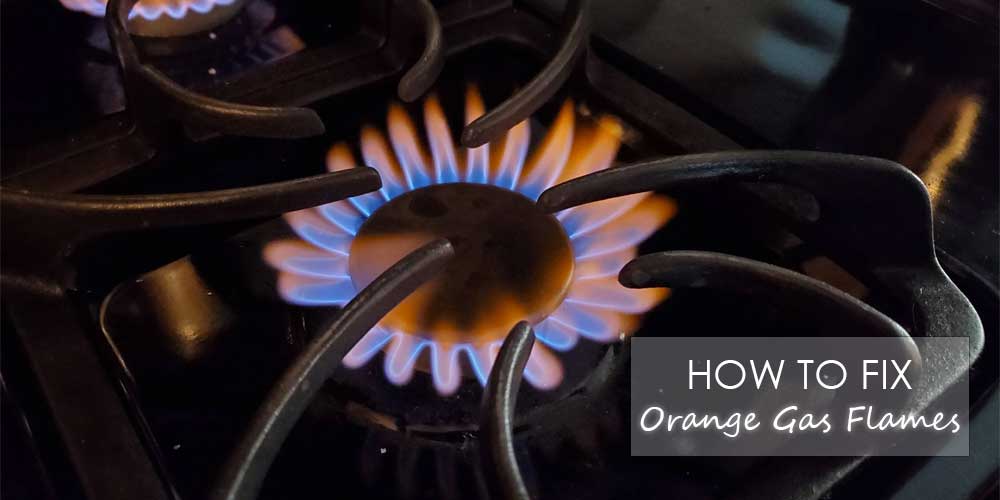
Our kitchens are like a chemistry lab where several reactions go on everyday. Some of these reactions if gone wrong can be hazardous. Much of what happens in our kitchen is about what happens to our gas stove. Normal flame of our gas stove is blue, hence when the flame turns orange it can be due to some abnormality.
Maintenance of our stove is important for our health and safety. If your gas range has an orange or yellow flame instead of the blue flame with yellow tip, it may be a matter of concern. When our stove flame is orange it can be due to several reasons. Such reasons should be fixed as soon as possible for the stove to work properly.
Why is the Flame on My Gas Stove Orange?
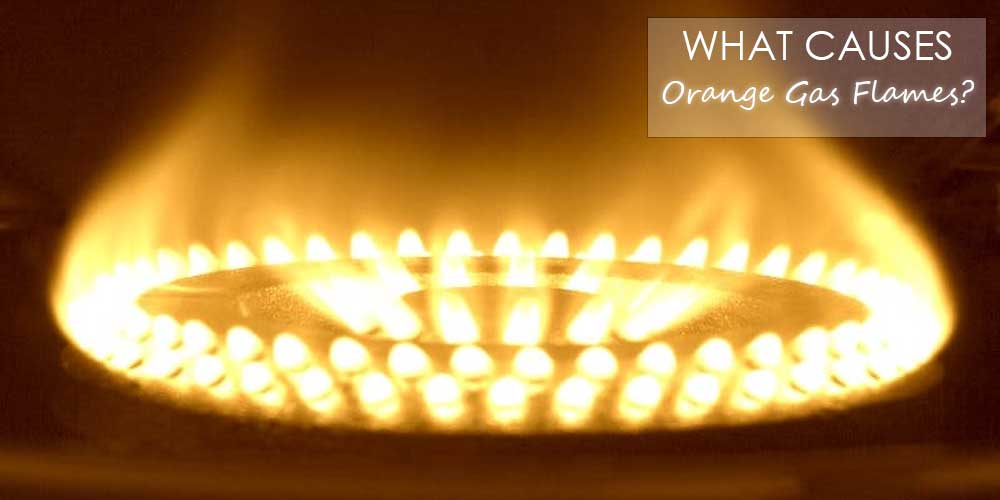
Orange flames on a gas stove can be an indication of the presence of carbon monoxide which may be produced by incomplete combustion. If there is an insufficient supply of oxygen to the gas stove, the blue flame does not ignite which wastes the oxygen and turns the flame orange. The reason behind this could be the improper mixture of fuel and oxygen.
At times it may happen due to the burning orifices being clogged due to dirt and debris. The burners should have proper orifices and should not be greasy. The orifices of the gas stove could get clogged due to smoke build-up or dirt accumulation. This can then result in improper oxygen supply making the flame orange.
Why is it Dangerous to Cook Over an Orange Flame?
Orange flames are produced when there is an imbalance in the ratio of fuel and oxygen. An orange gas flame points towards excessive production of carbon monoxide which is bad for your health, food and utensils. It is very hard to detect carbon monoxide since it is a colourless and odourless gas, but it can result in serious health hazards.
The production of carbon monoxide is extremely lethal for the human body. It can lead to symptoms like nausea, dizziness, and headache. If you accidentally inhale carbon monoxide, it can displace the oxygen in your blood and deprive your heart, brain and other vital organs of oxygen which is necessary for their proper functioning.
If you breathe in an environment which has high concentration of carbon monoxide, it will overcome you making you lose your consciousness and even result in death in certain extreme scenarios.
The orange flame can also be responsible for damaging your utensils. They can turn the new shiny utensils black and make it harder to clean. It can also be the factor behind reducing the overall strength of your utensils. Hence the orange flame is an indication that your stove is not functioning properly and therefore needs immediate attention.
What Flame Colour is Normal for Gas Cooktops?
A healthy, proper burning flame should be a gas flame blue with orange tips. The blue flame is an indication of a more efficient and complete fuel combustion. The ignition of blue flame releases a minimum amount of carbon monoxide which is at a safe level.
How to Fix Orange Flames on Gas Stove
1. Look for Clogs in Your Burner Caps
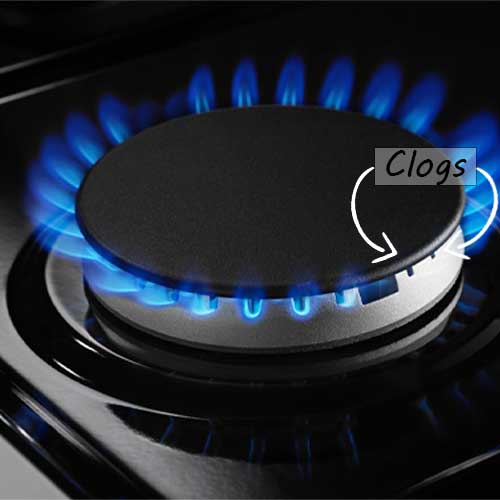
New gas stoves come with burners that are 100% free from any debris. The stove burner caps control the flow of gas to the burner, if they are not cleaned regularly they eventually get clogged.
A build up removing cleaner can be used to scrape off the junk that remains stuck to the burner caps. The soot can pile up in the burner porthole, due to improper combustion can block the small holes in the burner and thereby require cleaning.
The portholes and the burners should be free of any debris and be clean. The clogging of the caps can result in improper combustion thereby leading to the production of orange flames.
The burners should therefore be clean and placed properly for its proper functioning.
2. Clean Burners of Fatty Spillages, If Any

The burners should not be greasy by spilling any oily product or food. Food and drinks may sometimes spill over the pot and onto the burner.
Burning food particles produce a radiant yellow flame. Spilling during cooking can block the burner portholes which can then affect the colour flame.
Spillage during cooking such as grease, milk or other food traces can burn on the gas stove burner and produce a yellow flame instead of the standard blue.
The burner portholes and igniter should be cleaned and made free of any debris. An old toothbrush can be used to clean these areas.
3. Ensure the Orifices are Compatible to Your Cooktop’s Fuel Type
Sometimes the wrong orifices may be installed for the kind of gas being used. Liquid propane and natural gas have different air to fuel requirements. Hence they also require different orifices.
Using proper orifices depending on the type of gas cooktop or range is very important. If the orifices are not installed as per the type of the gas that is being used in the stove then the air to fuel requirement is not being fulfilled properly. This anomaly usually arises when converting a natural gas stove to propane.
This can then result in the air shutters getting damaged causing insufficient gas supply which produces the orange flames. Liquid propane needs more air for combustion than natural gas, hence ensure that your burner is suited to the kind of gas. In addition, you may also need to adjust the brass aperture and change the valve that controls the pressure of the gas.
4. Turn Your Dehumidifier Off
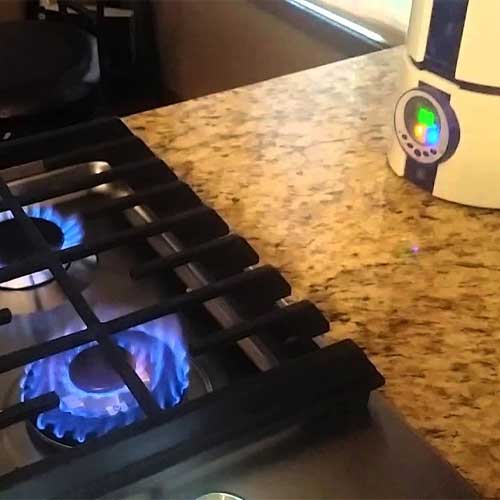
Humidifiers seem to turn the gas range flames from blue to orange.
It would not be appropriate to use a dehumidifier alongside natural gas since it can interfere with proper combustion, resulting in yellow flames.
Increase in humidity changes the color of the flame from blue to yellow, especially so when there is a humidifier.
It is advisable to turn the humidifier off and see if it brings any change in the color of the flame.
Other Useful Guides for Electric and Induction based Smoothtops
- How to Prevent Scratches on Induction Cooktops
- How to Use Non-Induction Cooktop on Induction Cooktops
- Does Cast Iron Work on Induction Cooktops
Frequently Asked Questions
Conclusion
An orange flame is a signal of a red flag and an indication that the stove or at least gas burner caps need to be cleaned on an urgent basis. The orifices should be unclogged, the burner cleared of any debris and the dehumidifier switched off, before the gas stove is assembled again.
Yellow flames on the stove are not a safety threat and are just an indication that the stove needs cleaning. The necessary steps should be taken to eliminate the colour of the flame from changing further. Check for soot build up, insufficient air supply, cooking spillovers, wrong orifices or excess humidity. Proper cleaning and maintenance can prevent any mishappenings from occurring.

